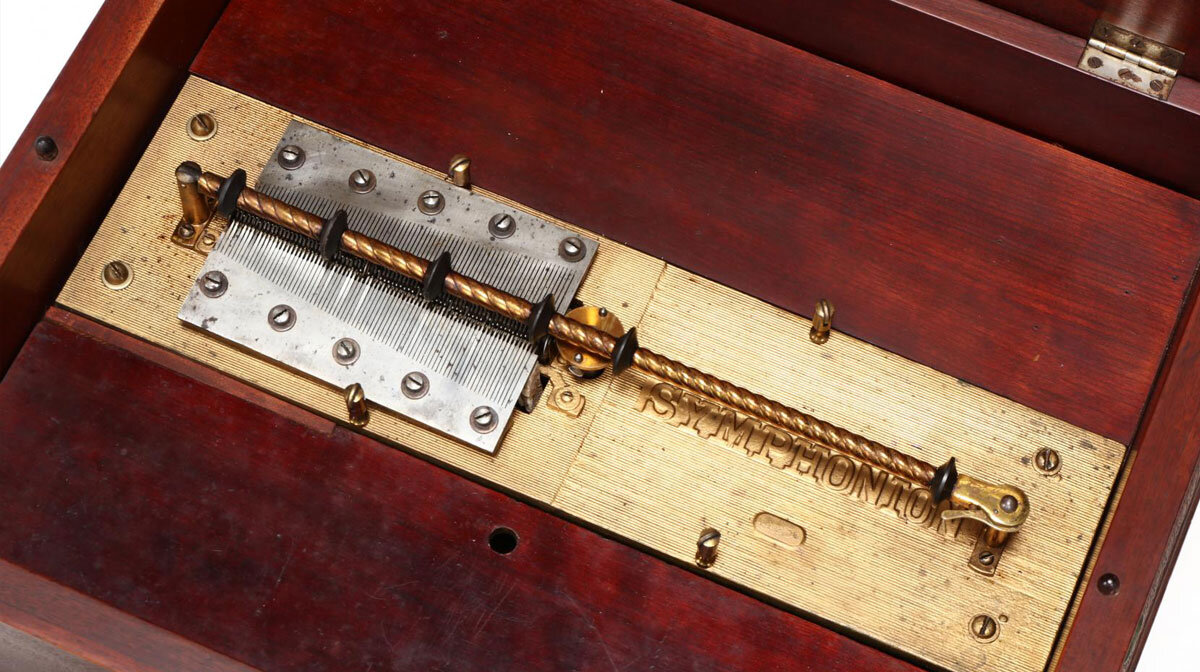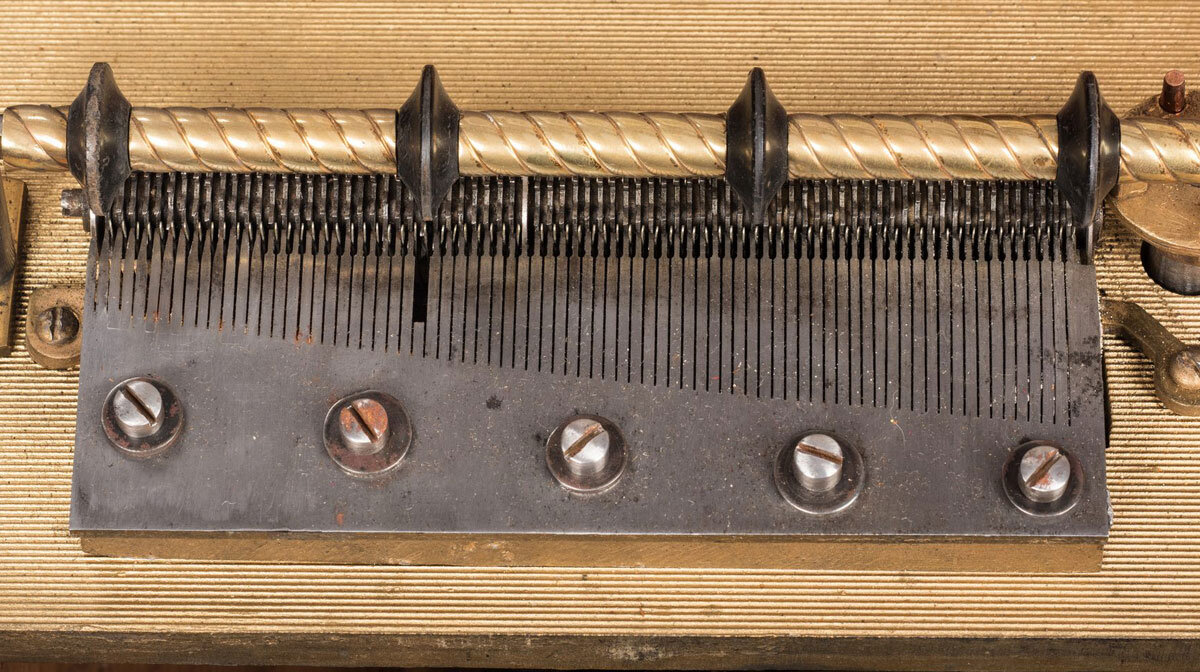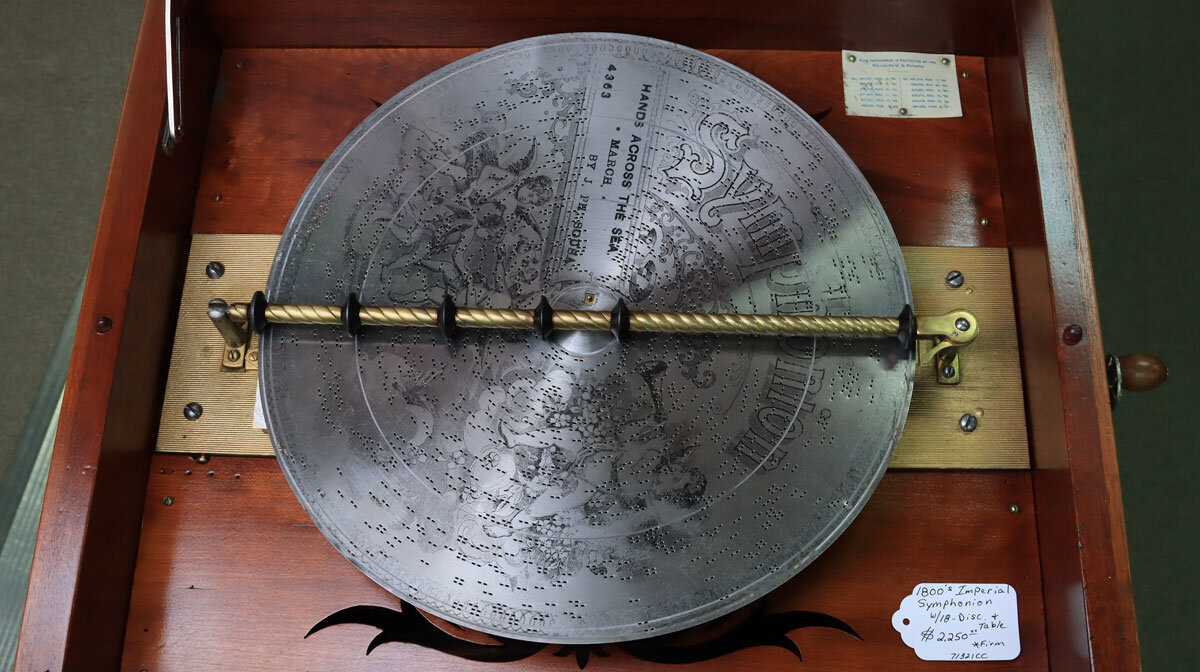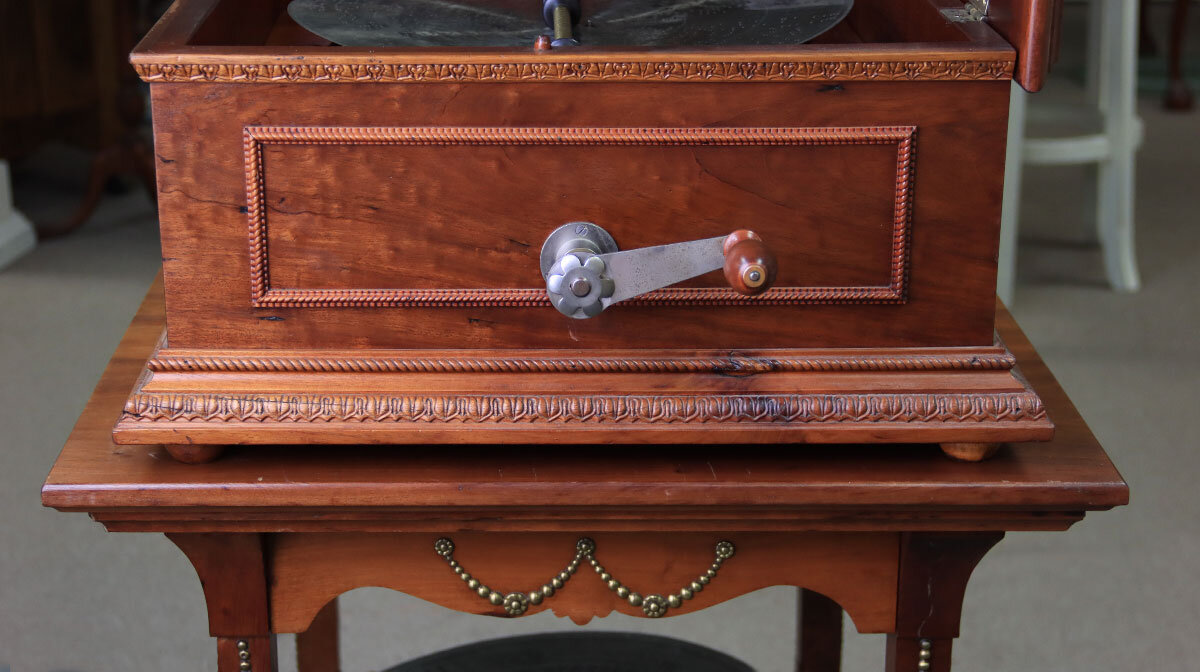Play music of the past on this pristine antique musical device - available now at Past & Present Home Gallery
Before there were CDs, Vinyl’s, iTunes or Spotify, music could not be recorded and played from the comfort of our own homes—at least not conventionally. In the 19th century people enjoyed songs via music box.
But these weren’t like the music boxes of today. Using metal discs that ranged in a variety of sizes, antique music boxes like this Imperial Symphonion (currently available for purchase at Past & Present) filled rooms with tunes that could be interchanged. Not only was the ability to switch songs in this manner a first for the time, but it was also a monumental step forward for the history of music.
This 1898 newspaper advertisement depicts one of the music box models for Symphonion.
Mechanics of this collectible Music Box
Inspired by the carillon bell towers of Europe, the first self-playing music box was invented in Switzerland circa 1770. Originally designed to fit in waistcoat pockets, the first music boxes were powered by clockwork and made by artisan watchmakers. As time went on, they soon grew to range in sizes from small to the size of grandfather clocks. These early musical inventions proved to be revolutionary, their only downside was their inability to change melodies.
In the 1880s, interchangeable disc players were introduced and gave their owners the option of playing different songs. It was in 1885 that the Symphonion Company was first founded in Leipzig, Germany and proceeded to make the largest variety of disc-playing musical boxes in the world.
So, how do these disc-changing music boxes work? To play songs, metal discs feature raised bumps and were warped accordingly so each bump was plucked at the correct moment. The disc rotated across metal combs that glide over these bumps to produce different tones and notes. In model number 143, the exact model at Past & Present, two combs are used which gives this device added depth and a richer sound void of the ‘tin-like’ quality found in singular comb models.
Unfortunately, love for the music box was short lived. With the invention of phonographs, nickelodeons, player pianos, and orchestrions, the industry was almost nonexistent by 1910. Some businesses lasted until the 1920s by diversifying their products—one popular manufacturer, ‘Regina,’ added vacuum cleaners, and other companies began producing typewriters and cameras.
While music boxes have not completely disappeared from the market, models like this Imperial Symphonion from the late 1800s offer a look into the past and make for a wonderful conversation piece.
The Imperial Symphonion
Complete with 18 discs, this antique mahogany music box rests atop a specially constructed and elegantly designed matching stand. At the base is a spot for convenient disc storage, or perhaps a small nook for decoration. Detailed with golden accents, it effortlessly complements the fully functional Symphonion.
The music box itself is in pristine condition and looks as though it has been transported directly from the past. Around its perimeter, ornate and intricate designs line the wood; the hand crank on the side is a polished silver that shows minimal signs of aging.
Made sometime between 1885-1896, this 130 years old music player still performs songs of the past with great care. The 18 separate metal discs are in magnificent condition. Similar artifacts found elsewhere often have significant oxidation that makes discs unplayable, but the ones found at Past & Present hardly reflect their age. There are plenty of popular melodies to choose from like the classic Civil War song ‘Marching Through Georgia,’ and the Christian hymn ‘Nearer My God to Thee’ - typical of the era in which this was manufactured. No matter the song you pick, the Imperial Symphonion will marvel and entertain anyone who listens or watches the device play.
From the lid’s timeless black-and-white portrait depicting seven wingless cherubs, to the haunting melodies that the Symphonion performs, every inch of this music box reflects more than a glimpse into the past. When you see the expert craftsmanship that has stood the test of time and hear its music in-person, you too will agree that this 19th century piece is best described as “a work of art.”
Conversation Pieces and Timeless Treasures Abound
Collectors—both casual and serious—can always find something worthwhile at Past & Present Home Gallery. Featuring areas designed for your inner diva, manly man and more, our huge exhibit space is organized for easy browsing and filled with unique items that you won’t be able to find anywhere else.
Stop in today to witness this masterful mechanical musician in action, and while you’re here don’t forget to discover the many other timeless treasures we have at Past & Present!










